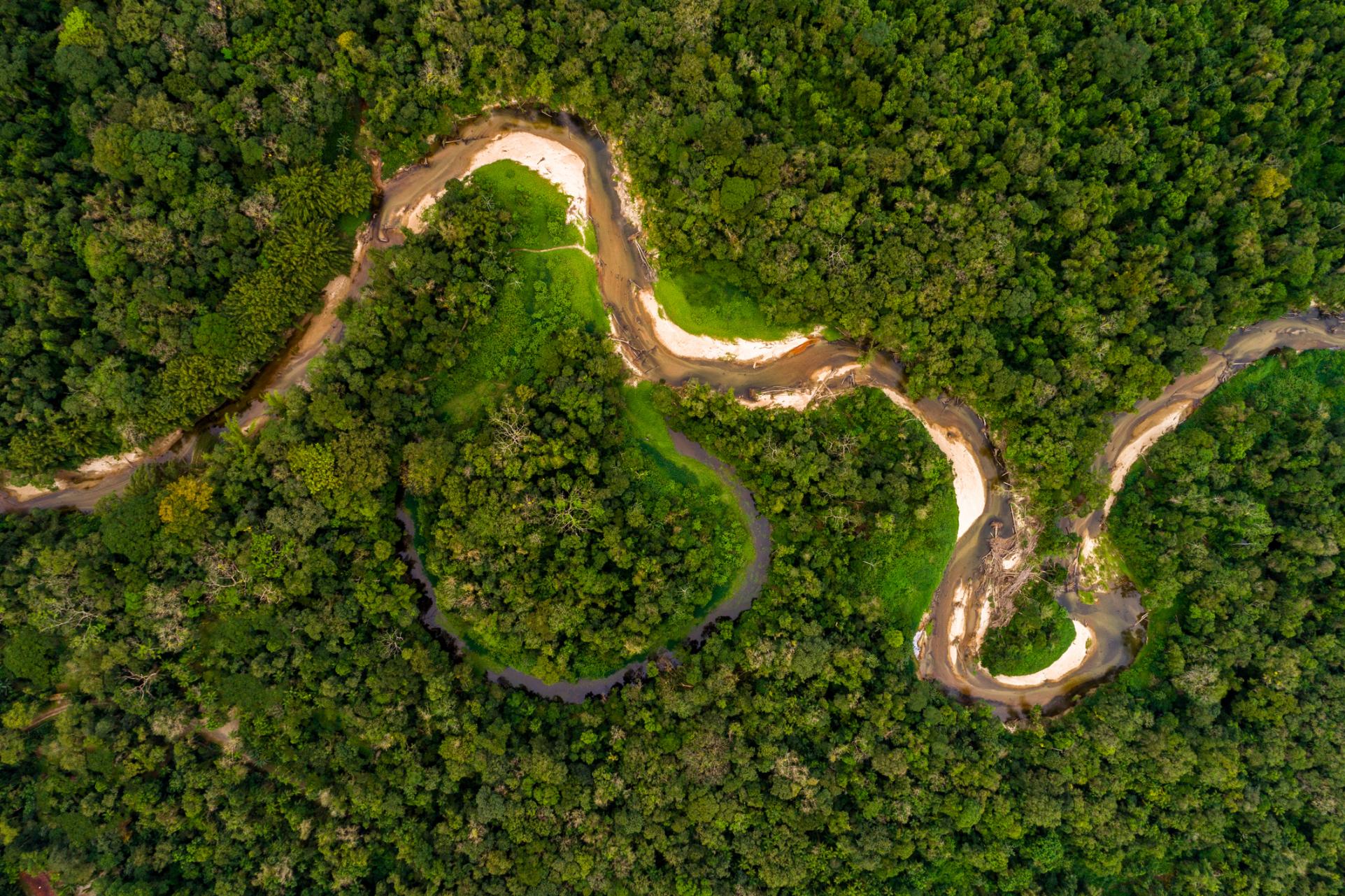Ecuador is a country for nature lovers, with a huge variety of ecosystems - snowcapped volcanoes, lush rainforest, high-altitude grassland (páramo) and tropical beaches. With 36 national parks and 25 nature reserves, it has protected around 23% of its land, a stat which doesn’t even include the newly created Tarímiat Pujutaí Nuṉka Reserve covering three million acres of Amazonian and Andean forest.
Easily the most famous of the parks and reserves in Ecuador is the Galapagos Islands. Located 600 miles (965 km) off the Ecuadorian coast, these sparse volcanic islands are home to a huge variety of endemic species, from the Galapagos giant tortoise to the Galapagos penguin. Another popular park is Cotopaxi, where the skyline is dominated by Cotopaxi Volcano (5897m), one of the highest active volcanoes in the world.
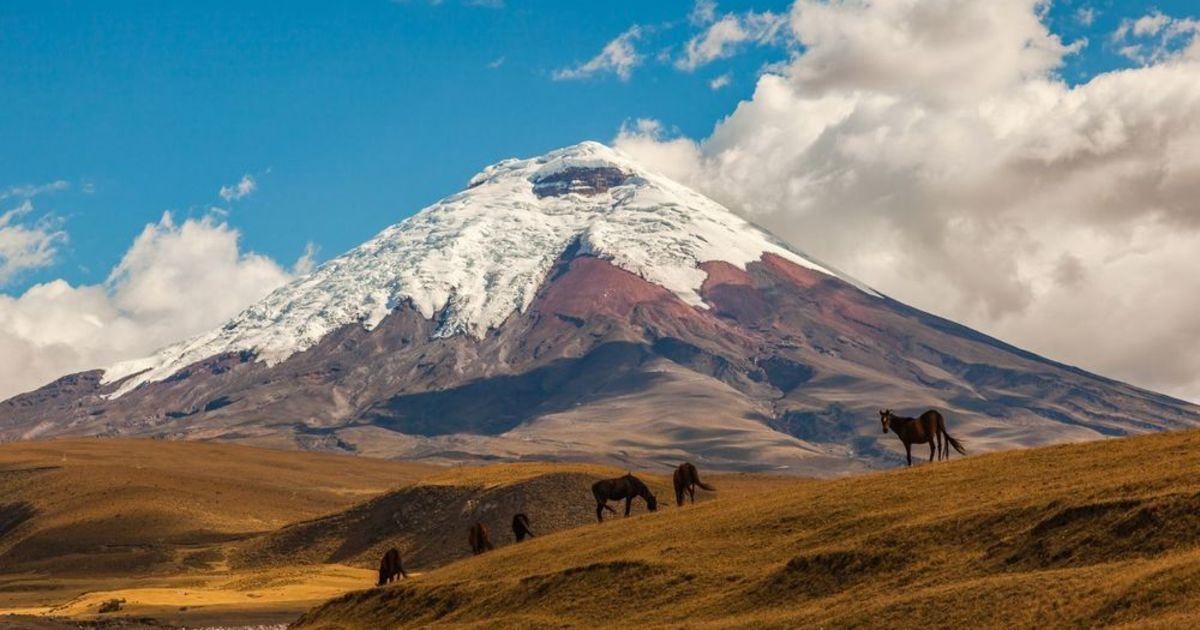
But Ecuador also boasts other, less-visited national parks, such as Yacurí National Park - a protected swathe of highland forest and mountains, studded with glacial lakes - which sees less than 2000 visitors per year.
This guide, featuring insights from Henry Sisa, a naturalist and Ecuadorian adventure tourism expert, helps you navigate the unique offerings of each national park, from their landscapes to the activities they provide.
Where are Ecuador’s National Parks?
The national parks of Ecuador are strategically located across the country, with Cotopaxi, Cayambe Coca, Sumaco Napo-Galeras, Llanganates and Sangay all situated in close proximity to Quito. This region, known as the 'Avenue of Volcanoes,' conserves parts of the Andes Mountains, offering diverse high-altitude ecosystems and volcanic peaks that are often climbable. The Galapagos archipelago is located around 605 miles (973km) off the west coast of Ecuador.
Ecuador's National Parks
1. Cayambe-Coca National Park
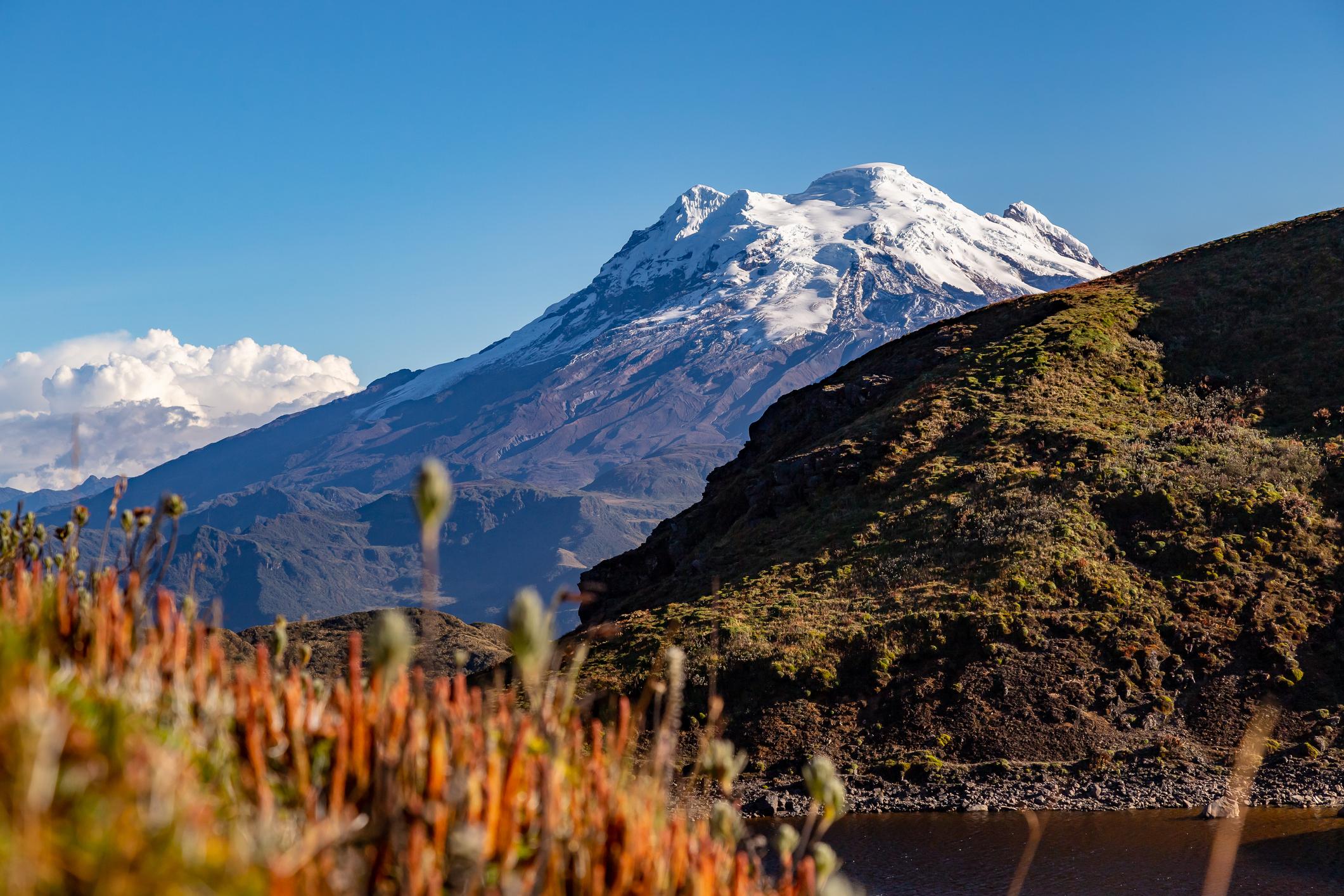
Best for: hot springs in Ecuador.
Gateway town(s): Cayambe, Papallacta, Santa Rosa de Quijos.
Cayambe Coca National Park (also known as the Cayambe Coca Ecological Reserve) lies across the equator and encompasses three very different regions of Ecuador: the Andean highlands, the Amazon rainforest, and the cloud forest that lies in between the two. It has been nicknamed the ‘national park of water’ by the Ecuadorian Ministry of the Environment.
“There is water everywhere in the atmosphere because of the constant fog and rain, in the vegetation and the leaf litter, in the wetlands and lagoons of the high areas, in the soil and moorland patches, in the rivers that form waterfalls and cascades,” Henry explains.
Three separate park entrances allow access to different attractions. One is near the town of Cayambe, providing access to majestic Cayambe Volcano (5,790m) which can be climbed with a guide. Another entrance is near the spa town of Papallacta, giving you access to the park’s lakes and high-altitude forests - ideal for hiking and birdwatching. You can also access the pretty village of Oyacachi, a burgeoning ecotourism destination known for its thermal springs. The third entrance to the park is near the village of Santa Rosa de Quijos.
2. Cotopaxi National Park
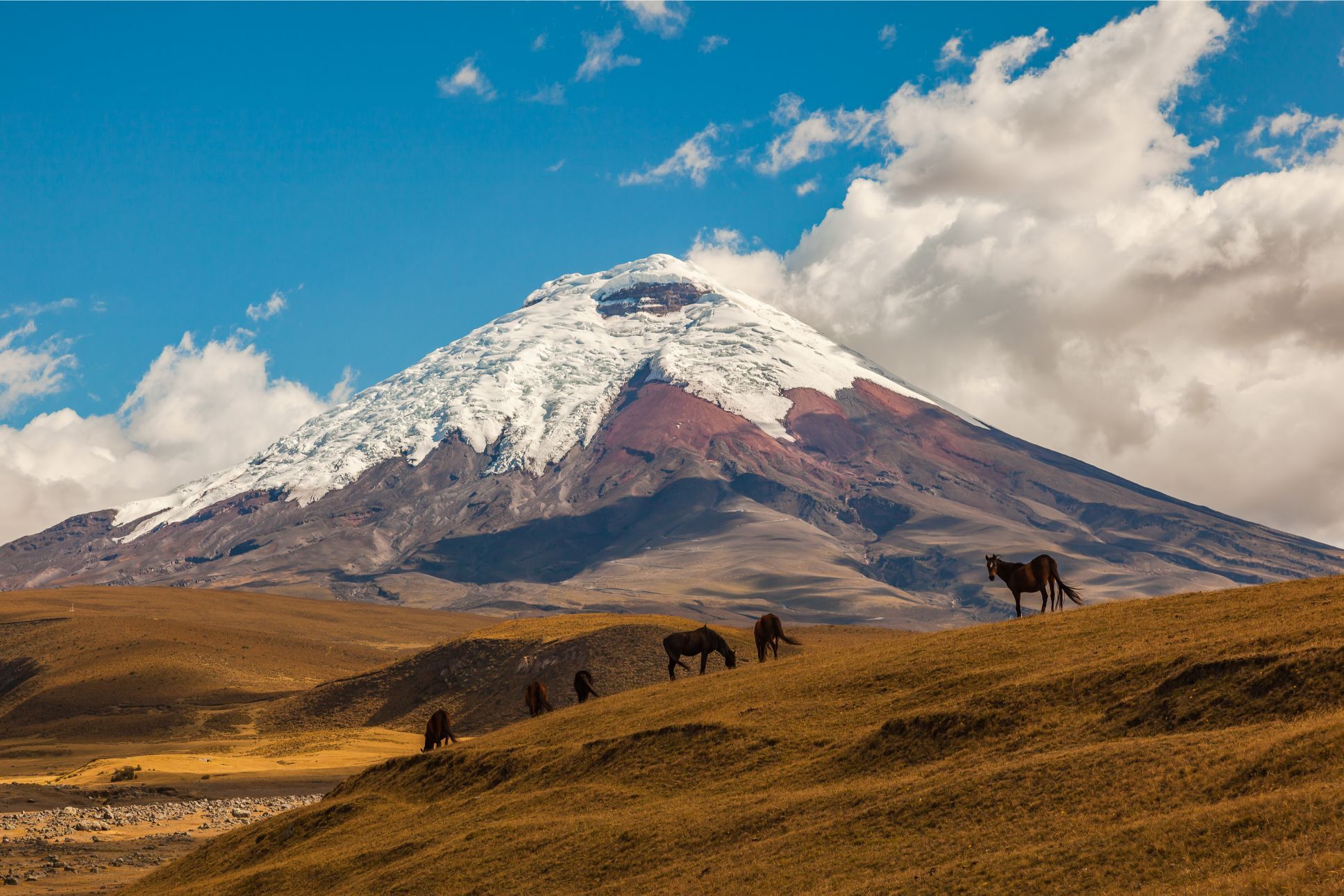
Best for: high-altitude volcano hiking.
Gateway town(s): Quito, Latacunga.
Cotopaxi National Park is nestled in the central Andes, around 30 minutes’ drive from Quito. The national park is on Ecuador’s famous Avenue of Volcanoes and the moody highland scenery is dominated by the symmetrical, snow-capped Cotopaxi Volcano (5,897 metres).
The summit of Cotopaxi is currently closed due to volcanic activity, but intrepid hikers can climb neighbouring Rumiñahui (4600m). According to Ecuadorian regulations, it is illegal to climb a glaciated peak (over 5000 metres) without a guide - but we’d also strongly recommend doing a guided climb of Rumiñahui.
“If the trail is technical, nobody recommends going without a guide - up Rumiñahui, for example - although some people do, and that is a personal decision,” Henry says. “But the park monitors all the volcanoes closely, and closes them to climbers if there’s volcanic activity, so you don’t need to worry about safety.”
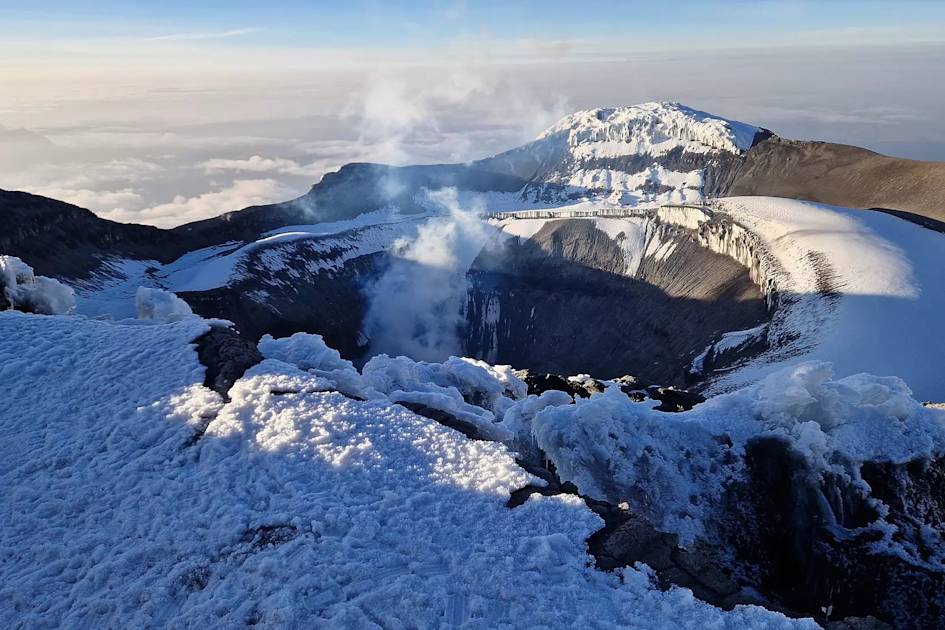
If high-altitude trekking isn’t your thing, there are several old-world haciendas (traditional farms) surrounding Cotopaxi. They offer bike hire, horseback riding and will give you advice on hiking the surrounding trails.
3. El Cajas National Park
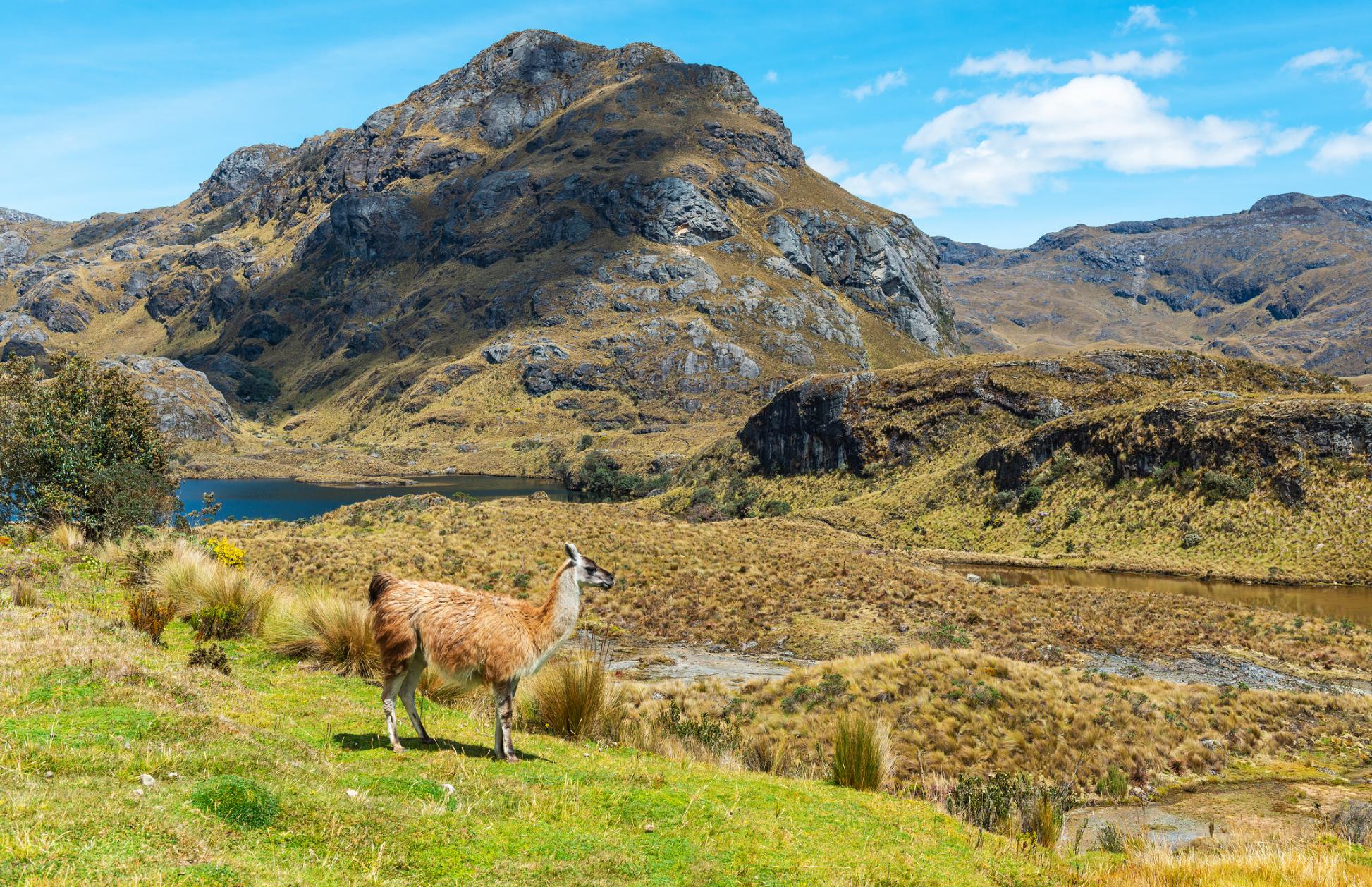
Best for: quiet hiking trails across misty mountains and páramo.
Closest town(s): Cuenca.
El Cajas National Park, located near Cuenca, boasts a stunning tundra-like landscape of valleys, rocky outcrops and 275 lakes surrounded by páramo grassland. Located at altitude, the temperature is cool and often cloudy. The park is a paradise for birdwatchers, with a multitude of species such as the Andean condor, mountain toucans and tropical woodpeckers.
There are plenty of hiking trails within the park, although they aren’t signposted - so taking a guide is advisable. An 11-mile (18km) section of the Qhapaq Ñan Route (or Great Inca Trail Road) through the park from Guagrahuma, very close to Laguna Luspa and passes through expansive mountain scenery to Laguna Zorrocucho (also known as Laguna Llaviucu) - you won't see a soul. Guided rock climbing is also possible, and trout fishing from the lakes.
4. The Galapagos Islands
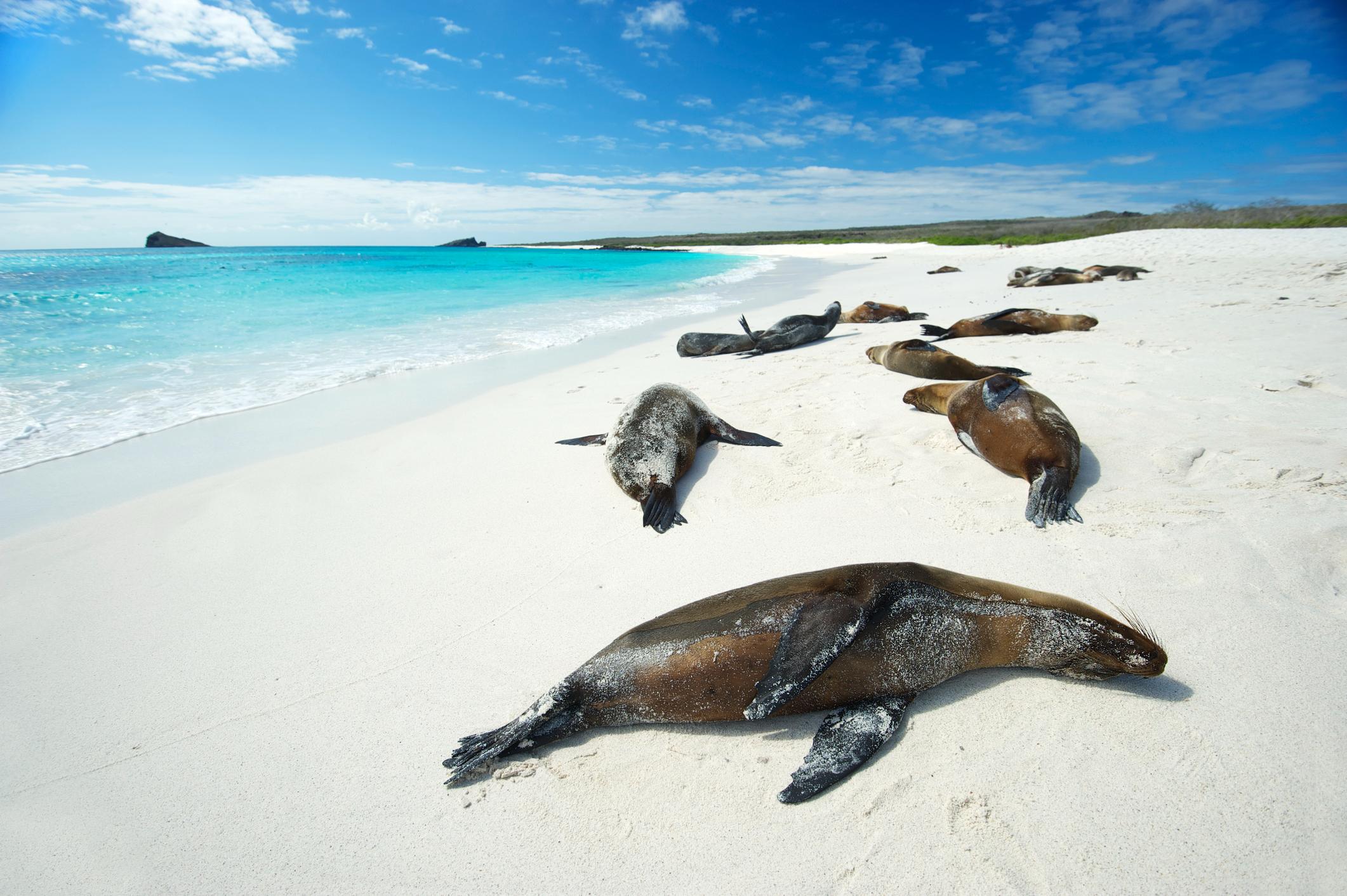
Gateway town(s): wildlife watching, snorkelling and beach life.
Closest town(s): Puerto Ayora (Santa Cruz), Puerto Vilamil (Isabela).
Despite their remoteness, these volcanic islands are the most popular tourist destination in Ecuador; a UNESCO World Heritage site renowned for its unique endemic wildlife - the islands inspired Charles Darwin’s theory of evolution.
“The Galapagos Islands are an incredible living laboratory of biology, where you can see how the animals have been shaped by evolution,” Henry says. “I think there's two incredible ways to discover the wildlife in the Galapagos. One is by walking, and the other one is by snorkelling, because half of the wildlife live on land and the other half are marine wildlife."
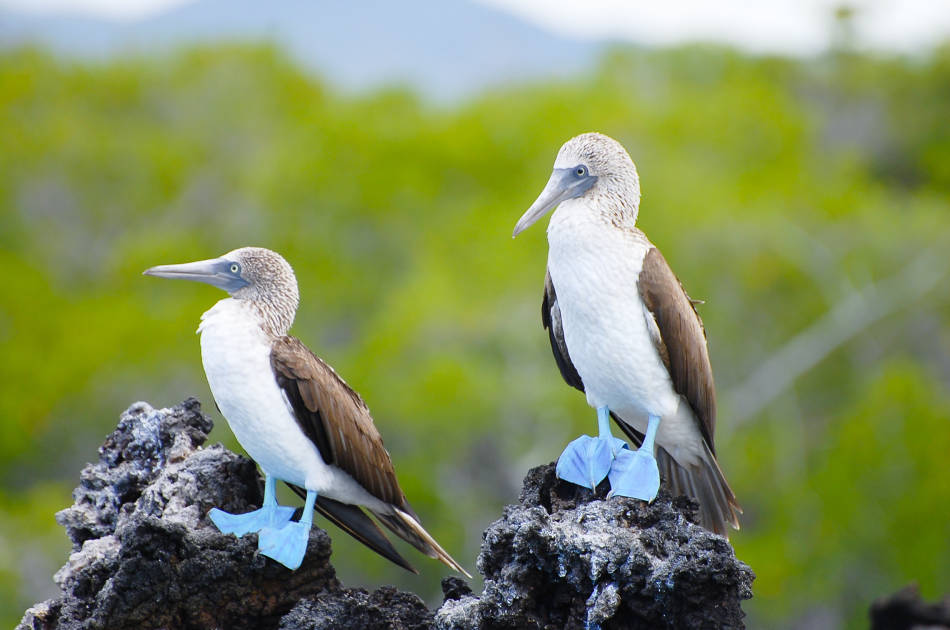
Henry's favourite island is Isabela. He says: "I love its remoteness - only 2,000 people live there - and it’s the most volcanically active. The wildlife is amazing. You can see flamingos and penguins there, plus giant turtles and blue footed boobies. One of the best places to go snorkelling in the Galapagos is in the Lava Tunnels - it’s a shelter for baby marine wildlife. You’ll see green Pacific turtles, reef sharks and seahorses - plus the sea lions are all around you.”
Read more: A Wildlife Watching Guide to the Galapagos Islands
5. Llanganates National Park
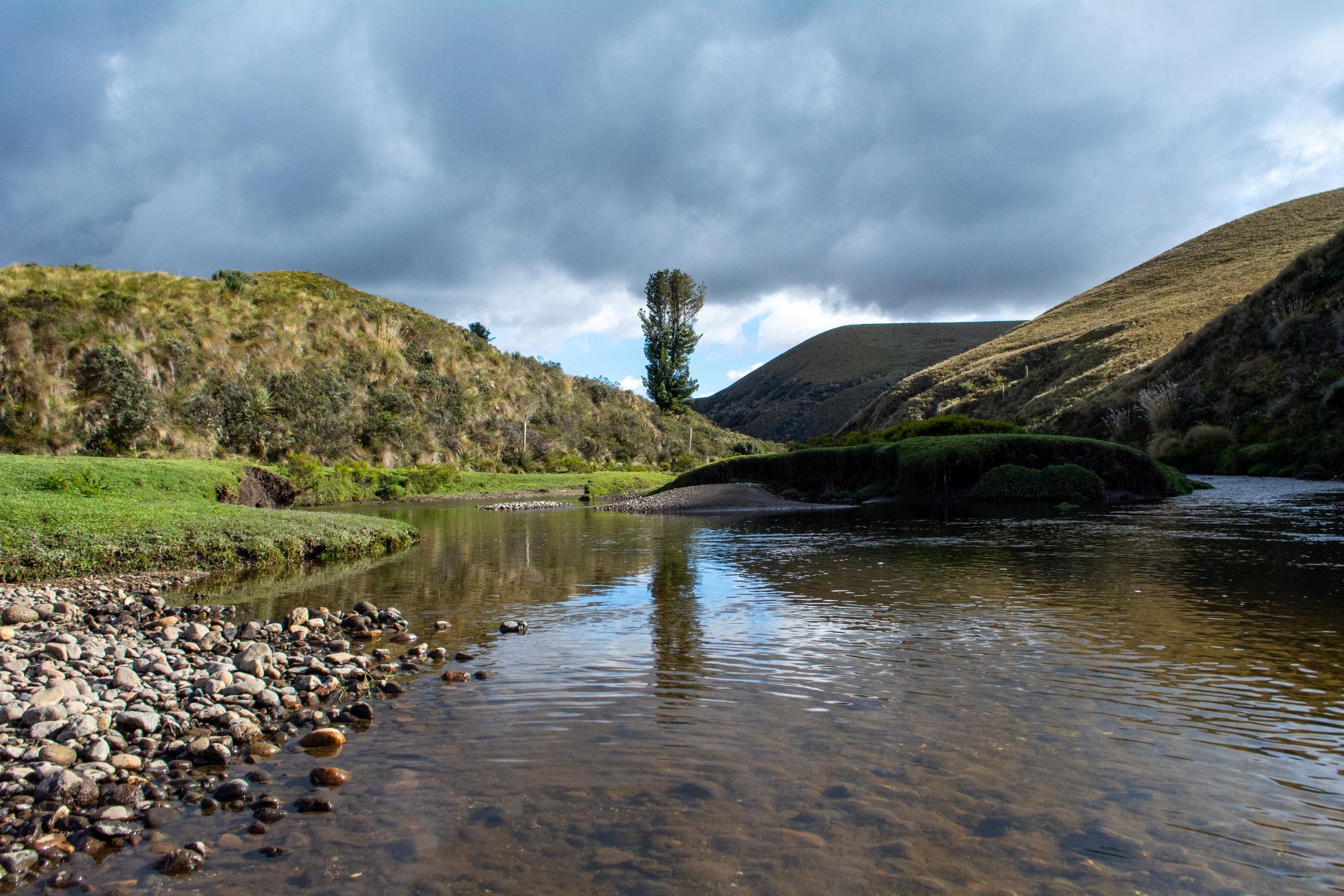
Gateway town(s): exploring untouched jungle.
Closest town(s): Pillaro, Baños.
Parque Nacional Llanganates, nestled in the eastern Andes, is known for its dense, mist-shrouded cloud forest - parts of which are still unmapped - while in the west you’ll find páramo and high peaks. According to legend, it’s where Incan warrior Rumiñahui hid the treasure of El Dorado from the conquistadores, and has attracted treasure seekers and explorers through the ages.
Go on a guided hike to explore this unique region, learning more about its biodiversity and history. Intrepid hikers can summit Cerro Hermoso (4576m) over a period of four days, or take shorter hiking trails through the foothills of the Tungurahua Mountains. Canyoning down streams and over small waterfalls is also a popular activity within the park.
6. Machalilla National Park
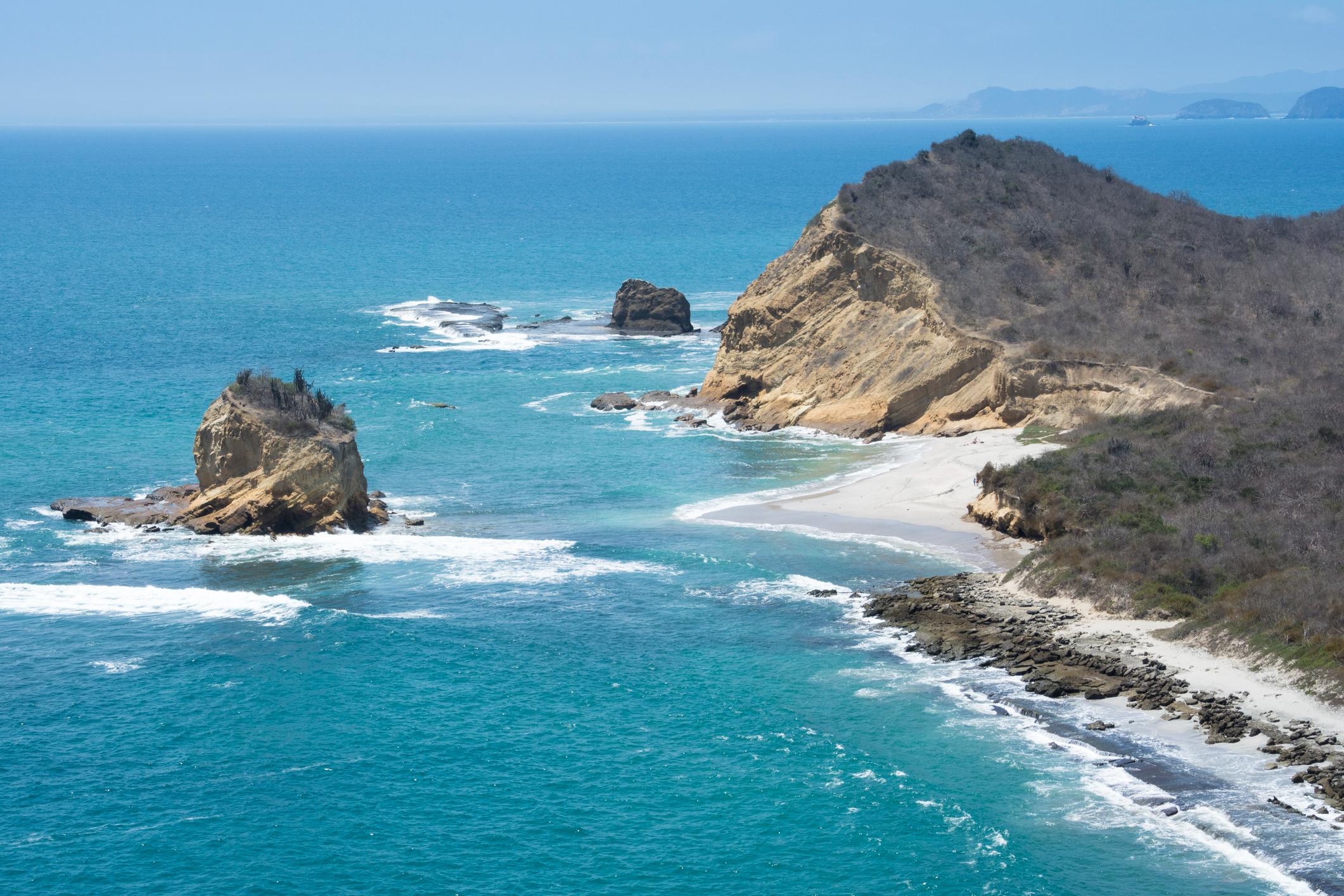
Best for: watersports such as surfing and scuba diving.
Gateway town(s): Machalilla.
Running along Ecuador's Pacific coast, Parque Nacional Machalilla is Ecuador’s only coastal national park. It features a diverse landscape of tropical dry forest, long stretches of pristine beach, offshore coral formations and the volcanic Isla de la Plata, often referred to as the ‘Poor Man's Galapagos’. You can visit Isla de la Plata to see nesting seabirds such as blue-footed boobies, and for whale watching tours between June to September.
One of the most popular destinations in the park is Los Frailes, said to be Ecuador’s best beach. Hike the dramatic headlands and paddle in the ocean. Surfing is also a popular activity along the coast, as is scuba diving and snorkelling.
Visitors to Machalilla can also visit the indigenous village of Agua Blanca, a brilliant example of community tourism. It has a small but interesting pre-Colombian archaeology museum, and a sulphur pool with therapeutic mud where you can dip. Longer guided hikes and horseback treks are also available.
7. Podocarpus National Park
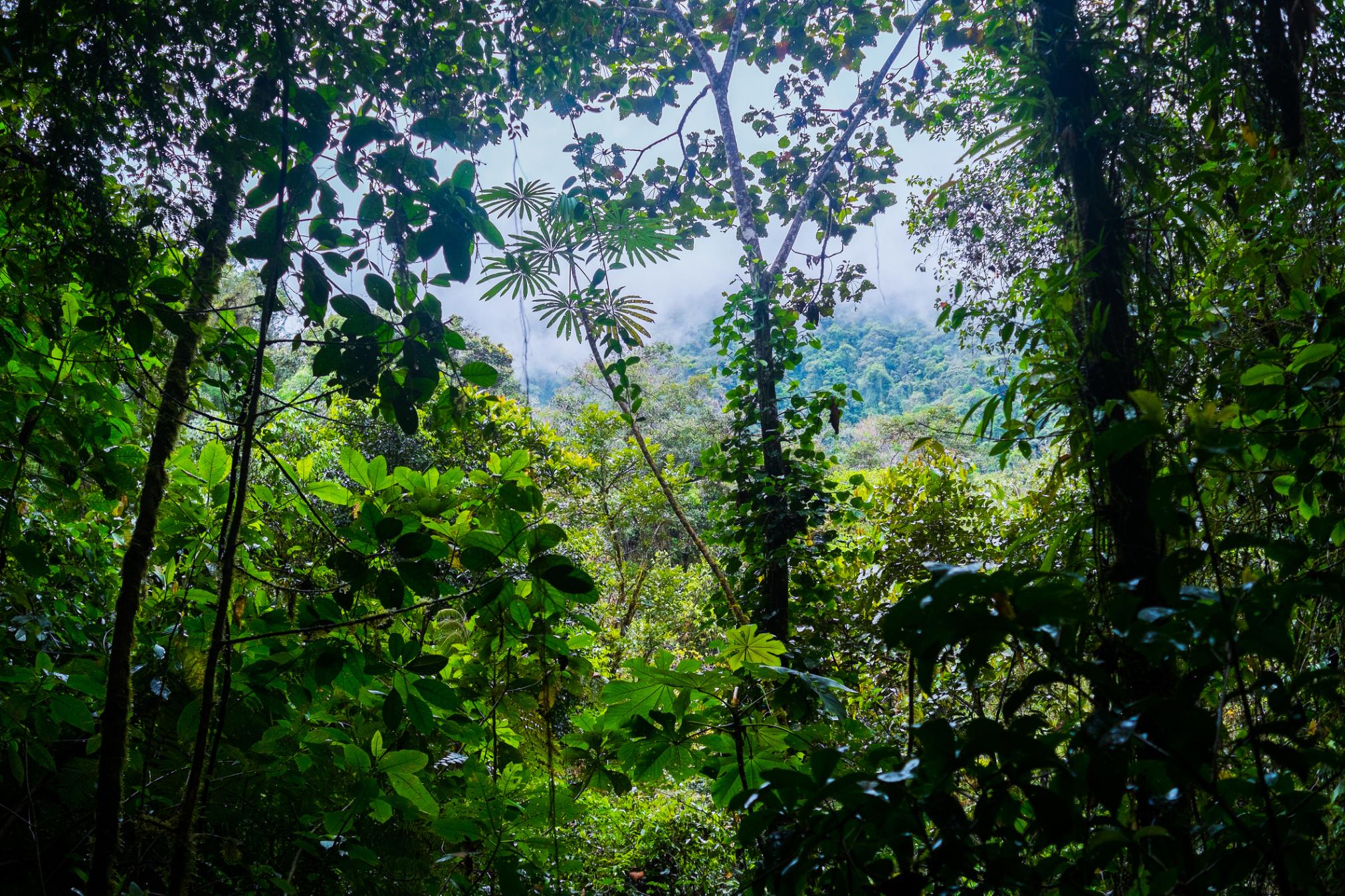
Best for: birdwatching.
Gateway town(s): Zamora (south), Loja (north).
Spanning the eastern and western Andes, Podocarpus National Park is named after the coniferous podocarpus trees that grow in its forests. It has a landscape of mountains carpeted with cloud forests and high altitude grasslands, and at lower altitudes there are swathes of rare elfin forest, an ecosystem characterised by miniature trees and abundant epiphytes.
The park is nicknamed the “Botanical Garden of America” and boasts around 400 plant species, 40% of which are endemic. It’s also home to 68 mammal species and around 560 bird species, including the golden-plumed parakeet, high-altitude toucans and masked mountain tanager among others.
Birdwatching is a particularly popular activity in the park, either independently or as part of a naturalist-guided tour. We also recommend hiking, as there are plenty of well defined trails within the park, many with campsites or cabin accommodation nearby. The Lagunas del Compadre trail is a two day trek through the forest, which opens out onto a chain of glacial lakes.
8. Sangay National Park
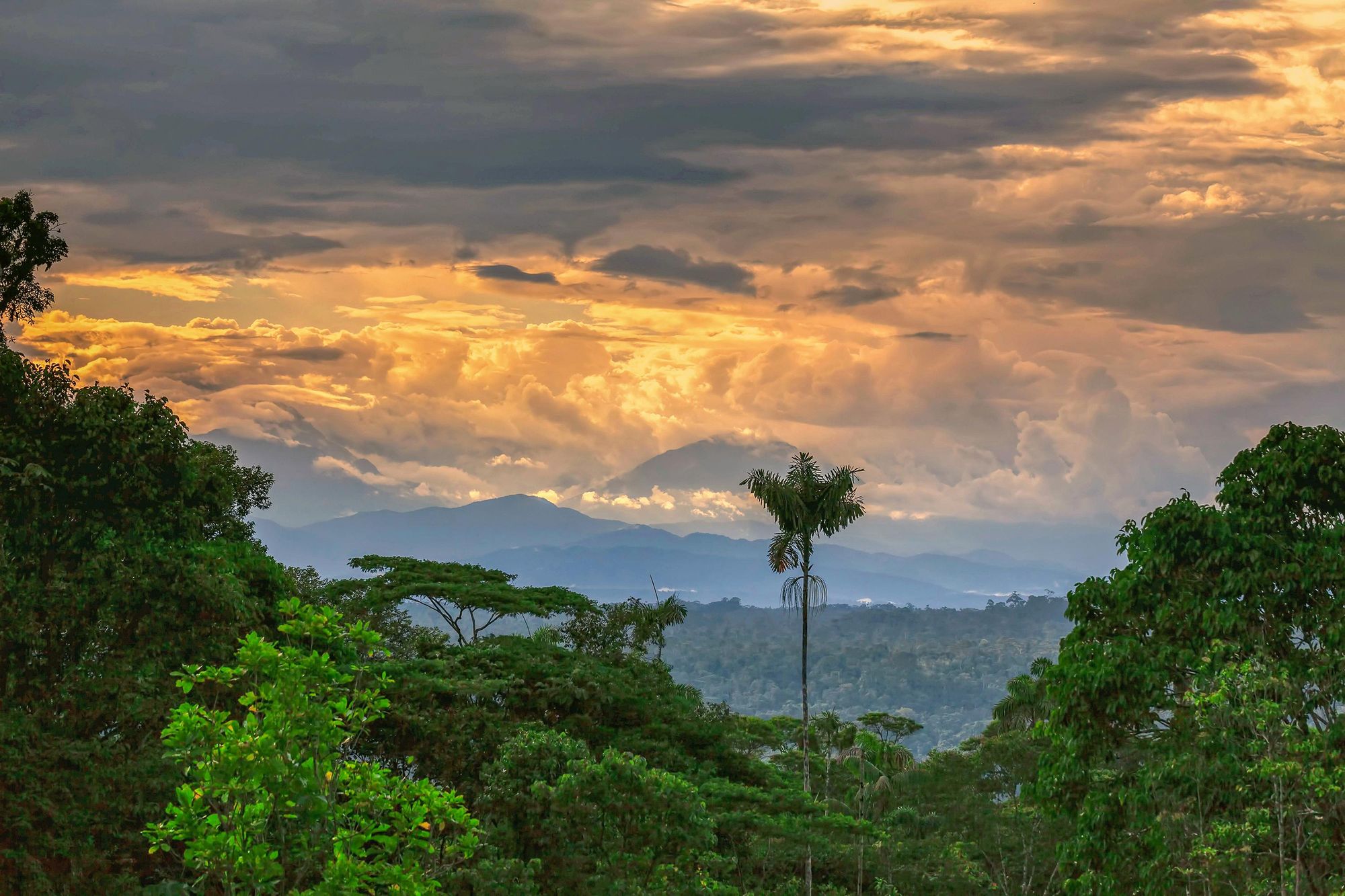
Best for: experiencing many of Ecuador’s habitats in one place.
Gateway town(s): Alao, Riobamba.
Parque Nacional Sangay is Ecuador’s largest highland reserve, spanning a 2000 square miles (5,178 square km) area of the provinces of Morona-Santiago, Chimborazo, Tungurahua, Cañar, and Azuay. It was designated as a UNESCO world heritage site in 1983, as it contains one of the most complex series of habitats in the world across an altitudinal range of 900 to 5,319 metres: glacial and volcanic ecosystems; cloud forests; páramo; wetlands; lakes; moorlands and grasslands.
The park's remarkable biodiversity is a testament to its varied habitats - it boasts over 3,000 flowering plant species, 430 bird species, and 107 mammals. Emblematic species include predators such as the ocelot, cougar, jaguar and páramo wolf - the park also has one of the largest spectacled bear populations in Ecuador.
To experience this biodiversity for yourself, we recommend hiking. The multi-day hike up to El Altar volcano (5319m) is particularly popular, while those who prefer something less challenging will prefer the trails around Lagunas de Atillo and the Lagunas de Ozogoche, a cluster of lakes in the south of the park.
9. Sumaco Napo-Galeras National Park
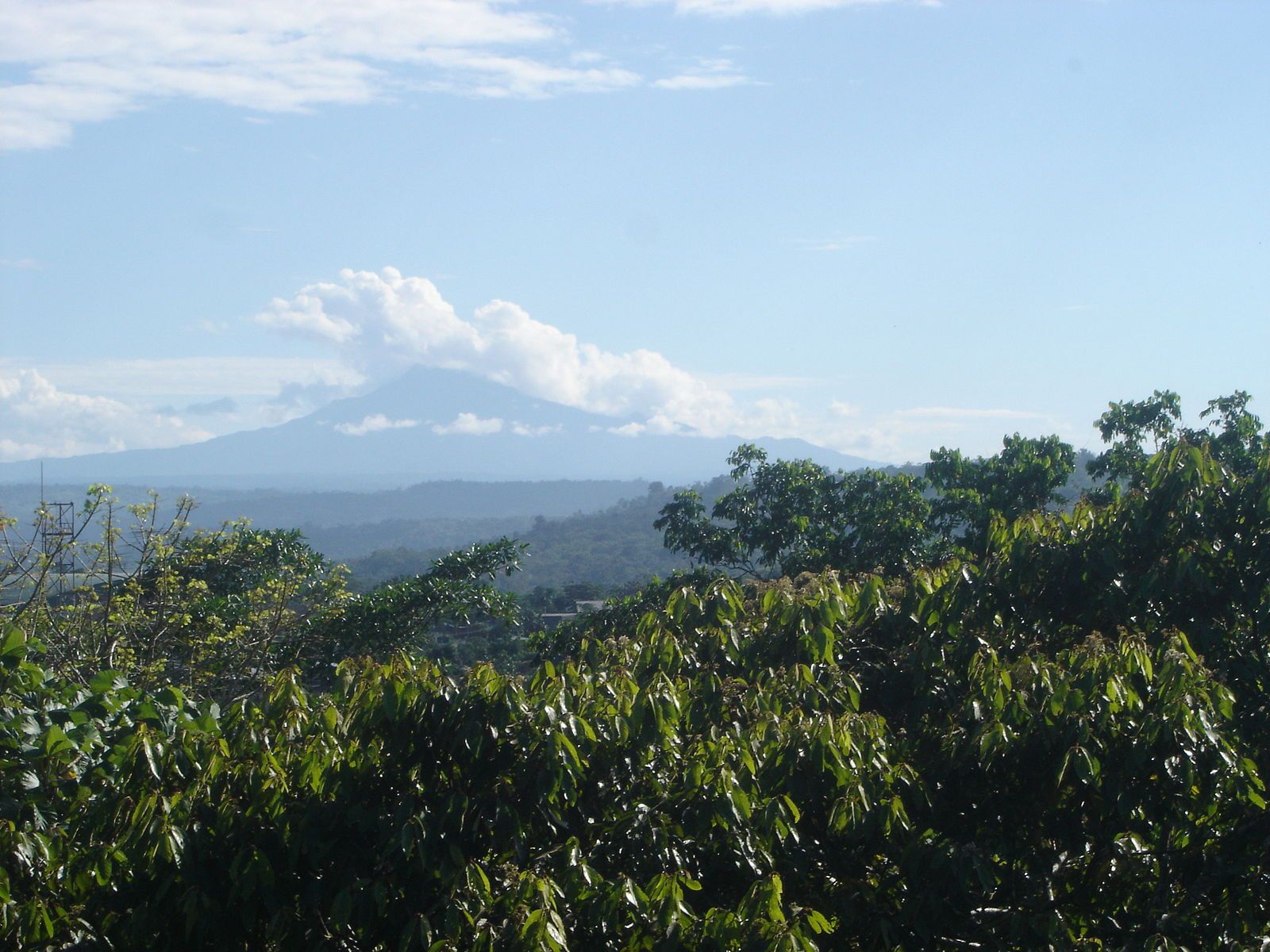
Best for: hiking a volcano surrounded by rainforest.
Gateway town(s): Pacto Sumaco.
Sumaco Napo-Galeras National Park is located in the northeast of Ecuador and comprises two isolated mountain systems of the Andes: the Sumaco volcano massif and the Galeras mountain range, and the surrounding páramo and forest. Its elevation ranges from around 600 metres to 3,900 metres, which has led to high biodiversity, including rare orchids and unique bird species such as the Andean cock-of-the-rock.
Popular activities within the park include expeditions to hike Sumaco Volcano (3900m) which is the only volcano within the Ecuadorian Amazon - views from the top reveal the snow-capped peaks of Cayambe and Cotopaxi, as well the untouched forest. Rafting is also a popular activity in the area - there are some sections of white water on the Rio Napo and Rio Quijos and Rio Coca, surrounding the park.
10. Yacurí National Park
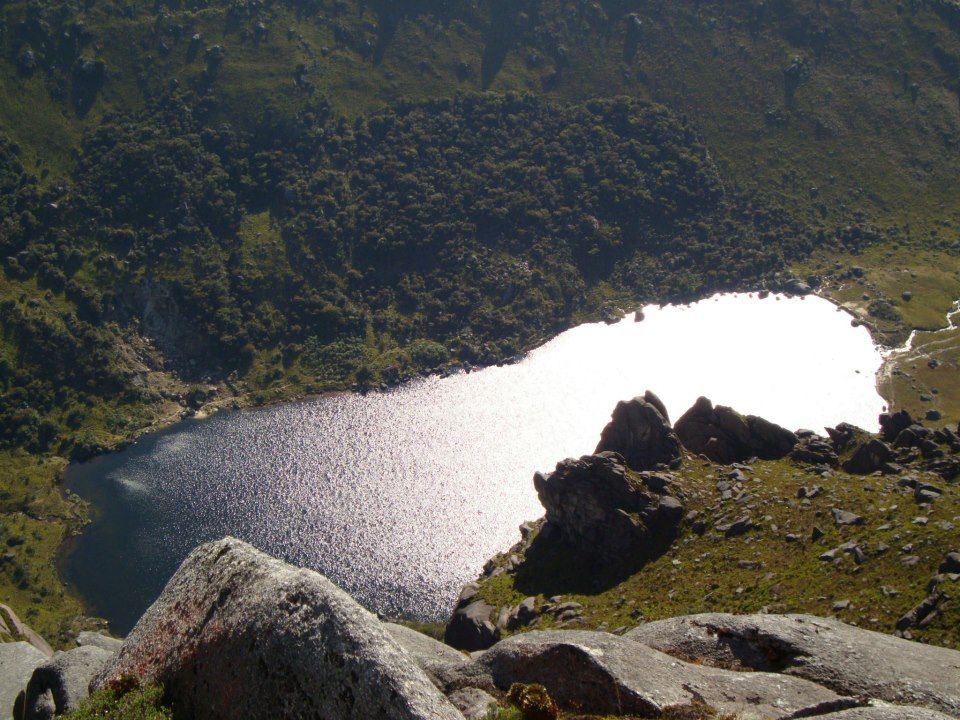
Best for: high-altitude hikes along rarely trodden trails.
Gateway town(s): Loja.
Yacurí National Park is situated in the southern Andes below the larger Podocarpus National Park and near the Peruvian border. It incorporates a variety of habitats, from cloud forests to páramo - the park is located at around 3000 metres above sea level - and contains 46 high altitude lakes. There are 18 species of mammal living within the park, including the endangered mountain tapir and the endangered spectacled bear.
Yacurí was created to help preserve Ecuador’s landscapes, and extend the habitat of the endangered Andean condor. It’s rarely visited by tourists, partially because it’s Ecuador’s newest national park, but also because of its inaccessibility. You’ll need to travel to the southern city of Loja and from there it’s 93 miles (150km) to the getaway village of Amaluza (18.6 miles/30km of which is unsealed).
The park has several rarely-trodden hiking trails, the most popular of which is the path to Laguna Negra, which is located in a caldera of an extinct volcano and is renowned for its healing waters - it’s sometimes visited by local shamans. The ‘picachos scenic trail’ is a little more challenging, taking you up jagged mountains and offering spectacular views of the lakes below.
11. Yasuní National Park
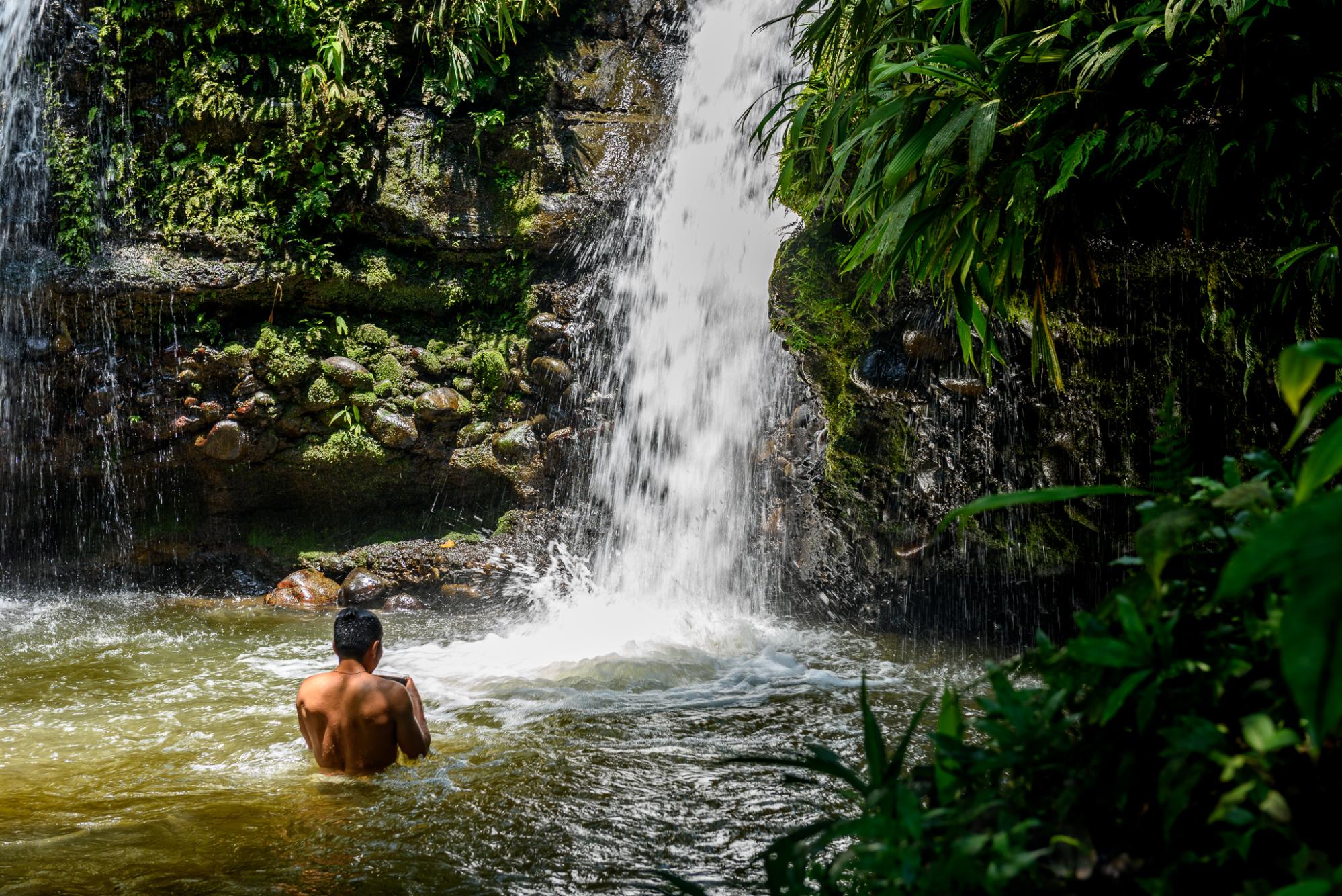
Best for: off the beaten track rainforest exploration.
Gateway town(s): Coca.
Parque Nacional Yasuní is a 3,792 square miles (9,823 square km) reserve in the Amazon basin in northeast Ecuador, lying between the Napo and Curaray Rivers.
It is considered one of the most biodiverse places in the world, where over 650 tree species can be found within a single hectare, and more than 130 threatened animal species can be found, including giant armadillos, golden-mantled tamarins and spider monkeys. Elusive jaguars pad silently through the undergrowth, while pink river dolphins populate the rivers.
The Huaorani people were one of the last contacted groups in western society, and they continue to keep their traditions.
The park is also home to indigenous communities such as the Huaorani, while two uncontacted tribes - the Tagaeri and the Taromenane - live in the park’s ‘untouchable zone,’ in isolation from the rest of the world. To explore Yasuni National Park you can head deep into the jungle, where few people ever go. It’s also possible to stay with the Huaorani, who are open to tourism as an alternative income to the benefits offered by oil companies.
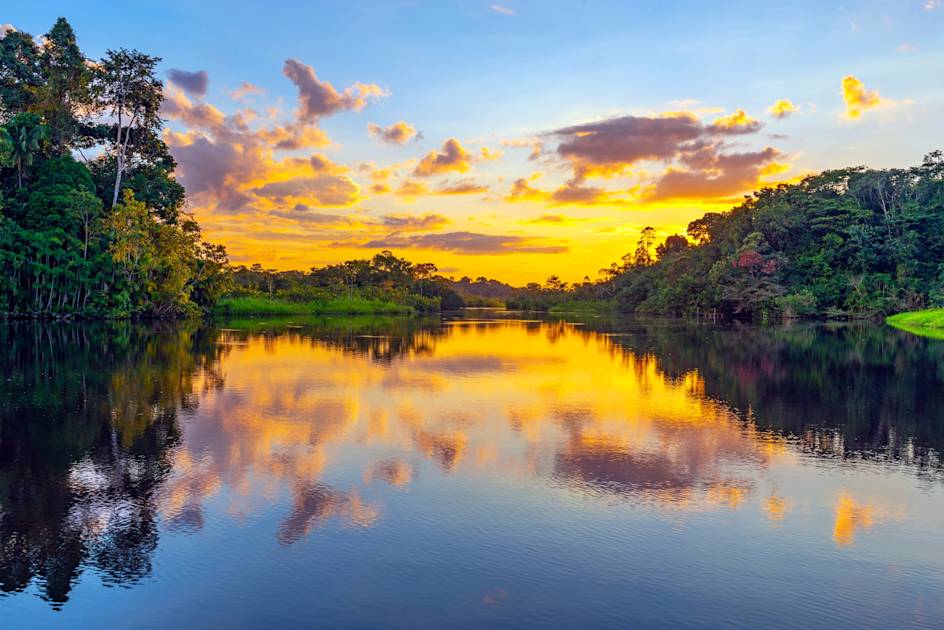
“Yasuní has some amazing lodges, but the way we explore it is through paddling the narrow rivers, getting into nature in the most fantastic way,” Henry says. “We have to bring a chef; we have to bring everything with us. It's like embarking on an expedition into the Amazon.
“The first stop is in a house of one of these Huaorani chiefs, and she shows us the way they live, surrounded by wildlife. The Huaorani people were one of the last contacted groups in western society, and they continue to keep their traditions. For example, they wear no clothing, they still live off fishing and hunting. Then we continue navigating downriver, on a kayak or a a canoe, exploring deeper - where there are no more humans, just the national park for yourself.”
Read more: Welcome to Yasuni, One of the Most Biodiverse Places on the Planet
Which National Park in Ecuador Should I Visit?
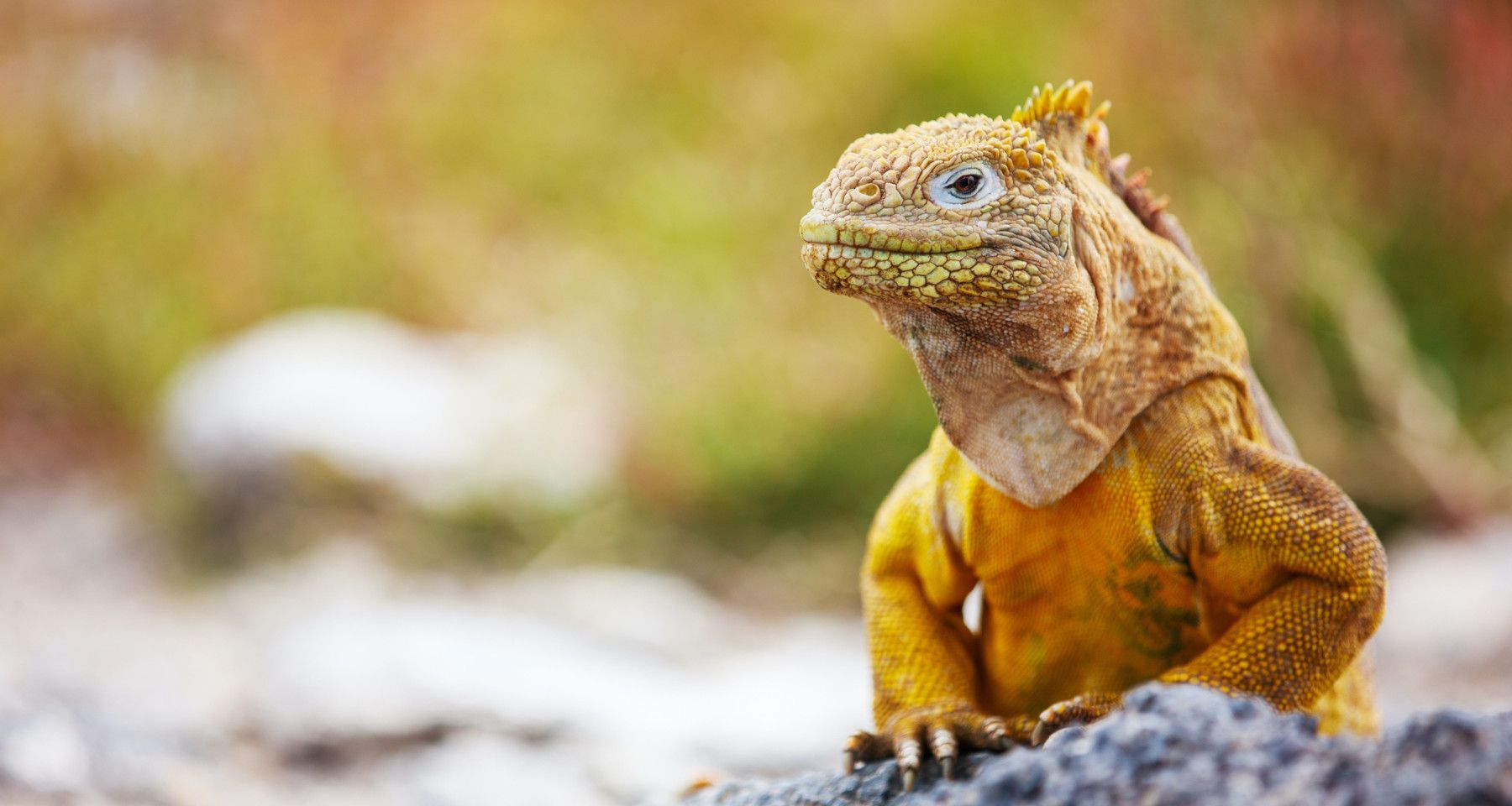
Thanks to the proximity of Ecuador’s national parks, you don’t need to restrict yourself to just one. Henry’s top recommendation for wildlife encounters is the Galapagos Islands, which he describes “as a paradise here on earth.”
He adds: “You will see wildlife even if you don't do a specific activity because they are all around you; even when you’re walking the streets or walking on the beach, it’s full of animals.”
A close second for him is Yasuní National Park, in the heart of the Ecuadorian Amazon.

“In Yasuni you can stay with the Huaorani people,” he says. “They are known for living in such a remote area with very little contact and keeping all their customs and traditions of living within the forest, so it’s an incredible area to visit. Every person that goes into this part of the Amazon with us says it’s a life-changing experience.”
If you enjoy hiking in Ecuador, we’d recommend adding a third national park to your itinerary. Cayambe Coca or Cotopaxi National Park are good choices for volcano climbing in the Andes, especially if you take into account their proximity to Quito.
Inspired? On our epic Ecuador adventures you can travel to Yasuni, the Galapagos, Cotopaxi and Llanganates national parks.


